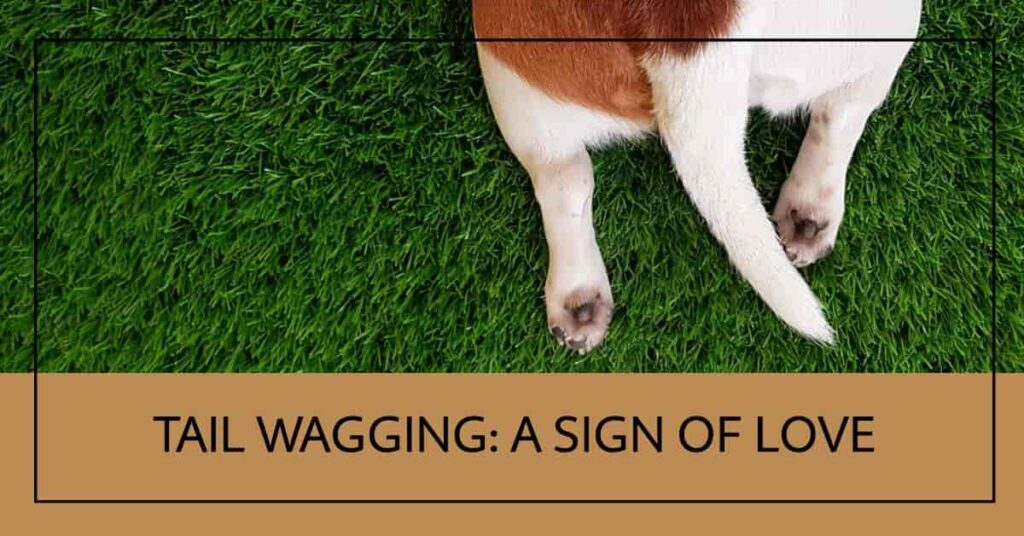You walk through the door after a long day, and there it is—the unmistakable, rhythmic swaying of your dog’s tail. It’s as if your furry friend is waving a banner of joy, welcoming you back to your shared abode. But have you ever stopped to wonder, “Why does my dog wag his tail when he sees me?” Is it merely a sign of happiness, or is there more to this seemingly simple gesture?
In this comprehensive article, we’ll delve deep into the science and psychology behind tail-wagging, exploring various perspectives from animal behaviorists, veterinarians, and psychologists. We’ll also look at how this form of communication has evolved over time and what it means in different contexts. By the end of this read, you’ll have a nuanced understanding of why your dog wags his tail when he sees you, and perhaps a newfound appreciation for the complexity of canine communication.
The Science Behind Tail Wagging
Anatomy of a Wag
Before we get into the psychology, let’s understand the anatomy involved in tail-wagging. A dog’s tail is an extension of its spine and is made up of several small vertebrae. Muscles and nerves control the movement, allowing for a range of motions from subtle flicks to full-blown, enthusiastic wags.
Sponsored Ads
Neurological Factors
The act of tail-wagging is controlled by the dog’s central nervous system and is often an involuntary response to various stimuli. The brain sends signals to the muscles in the tail, causing it to move in specific patterns. This is similar to how humans might smile instinctively when pleased.
The Language of Tails
Emotional Barometer
One of the most straightforward interpretations of tail-wagging is that it’s an emotional barometer. A wagging tail generally indicates a dog’s emotional state—be it excitement, happiness, or even nervousness.
Sponsored Ads
Direction Matters
The direction of the wag also holds significance. A wag to the right may indicate positive emotions like happiness or excitement, while a wag to the left might signify negative emotions such as fear or aggression. This theory is backed by a study published in the journal “Current Biology,” which found that dogs wagged their tails to the right when they saw their owners and to the left when they saw an unfamiliar, intimidating dog.
Speed and Amplitude
The speed and amplitude of the wag can also offer clues. A fast wag usually indicates excitement or happiness, while a slow wag could mean a dog is insecure or submissive.
Sponsored Ads
Evolutionary Perspectives
Wild Ancestors
The domestic dog’s wild ancestors, wolves, also exhibit tail movements, albeit for different reasons. In a pack, wolves use their tails to communicate various messages, from signaling danger to showing submission to a dominant pack member. Over thousands of years of domestication, dogs have adapted this form of communication to interact with humans.
Human Influence
Humans have played a significant role in shaping the way dogs communicate. Selective breeding has led to variations in tail shapes and sizes, which can affect the way a dog wags its tail. For example, a Greyhound’s thin, whip-like tail will move differently than a Golden Retriever‘s fluffy, plume-like tail.
Sponsored Ads
Context is Key
Greeting Ritual
When your dog sees you, his wagging tail is often part of a larger greeting ritual that may include jumping, barking, or even bringing you a toy. This is your dog’s way of saying, “I’m happy to see you!”
Social Bonding
Tail-wagging also serves as a social bonding mechanism. By wagging their tails, dogs reinforce social bonds with their human family members, similar to how humans hug or shake hands.
Environmental Factors
The context in which a dog wags its tail can greatly influence its meaning. For instance, if your dog wags his tail while exploring a new environment, it could indicate curiosity or interest rather than happiness.
Health Implications
Tail Injuries
Excessive tail-wagging can sometimes lead to injuries. “Happy Tail Syndrome” is a condition where a dog injures the tip of its tail from wagging it too hard against hard surfaces. If you notice any signs of injury, consult your veterinarian immediately.
Emotional Well-being
A lack of tail-wagging could indicate emotional or physical issues. If your usually expressive dog suddenly stops wagging his tail, it might be a sign of discomfort or illness that requires medical attention.
Conclusion
Tail-wagging is a multifaceted form of communication that goes beyond mere happiness. It’s a complex interplay of anatomical, psychological, and social factors that have evolved over millennia. When your dog wags his tail upon seeing you, it’s not just a simple greeting; it’s a nuanced expression of emotion, social structure, and even health. So the next time you see that familiar wag, know that you’re witnessing a sophisticated form of canine communication, honed by both evolution and the unique bond between humans and dogs.

